Discover the Craftsmanship and Heritage of Indian Block Printing
November 8, 2023Timeless beauty, and age-old craftsmanship. This is the heritage that Indian block printed textiles exude. From pieces once prized by royalty and taste-makers to those that adorn modern homes around the world, the hand block printing process used to create them has not changed much in centuries. The history and technique behind these fabrics is complex, and remarkable.
Hand Block Printed Textiles That Traveled the World
It is difficult to say with any certainty when India first began practicing block printing. Records indicate that as early as the 12th century, certain coastal regions of the country were renowned for their excellent printed cotton. In the 17th century, the craft migrated to the state of Rajasthan in western India, which became the preeminent center for block printing.
The exceptional vitality and character of hand block printed textiles is unlike any other, and captured the hearts of both traders and patrons around the world. Indian dyed and printed cottons were famous for the quality of their designs and colors, which were new and unfamiliar to the Western consumers and carried tremendous influence over fashionable taste in Europe. During the 18th and 19th centuries, India was the world’s greatest exporter of handcrafted textiles. Europe paid in gold or silver for the highly sought-after printed textiles, and often used them as direct currency to barter for spices from Indonesia. Along with these spices, the remaining textiles were then taken back to London where they were sold for bullion.
Masters of Multicultural Design: The Global Impact
Indian artisans mastered techniques and styles from different regions, blending local traditions with outside influences. The result was one of the most magnificent pattern vocabularies ever created. Over time, the craft spread not just within the Indian subcontinent, but also to Southeast Asia, thanks to traders and maritime routes.
Hand Blocked Fabric Reached Wester Europe: A Fashion Revolution
When hand-blocked fabric reached Western Europe, it caused nothing short of a fashion revolution. Textiles from the Indian subcontinent were not only desired for their exotic patterns loved by Mughal emperors but also for the mastery behind them, which drew the attention of textile connoisseurs and even European royalty. The fabrics were so valued that they often served as a form of currency, exchanged for other goods and spices across different regions.
Aristocrats, textile connoisseurs and working people alike were charmed by the extraordinary printed fabrics, and gave their patronage to the craft. In England alone, lengths of Indian patterned silk and cotton, as well as hand made handkerchiefs, table napkins, Indian print bedding and neck-scarves were sold in the thousands. These storied antique hand block printed textiles can be found in museums all over the world today.
Block Print Fabrics: The Ancient Art Passed Down Through the Ages
The traditional craft of hand block printing process requires precision, skill and meditative focus.
It begins with the engraving of detailed designs onto a wooden block by a skilled block carver.
Various types of wood can serve as the source material for the block. However, many of our artisan partners choose to use Sheesham wood, also known as Indian rosewood, which is readily available. A skilled Indian artisan first sketches the design on paper, then transfers it to a perfectly smooth block of wood.
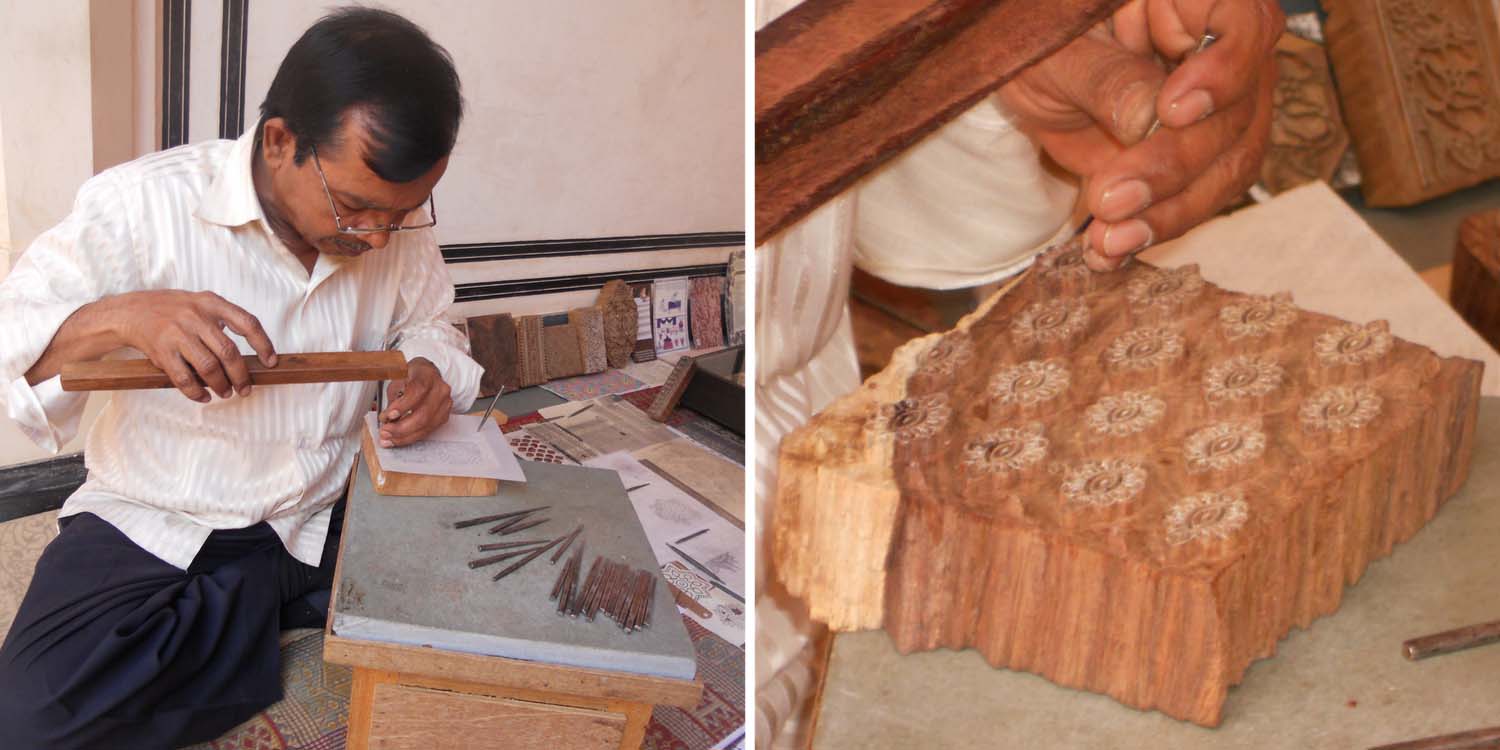
Perfecting Each Separate Block
A separate block is required for each distinct color in the design. To capture this culturally distinct art form, a high level of care and craftsmanship is invested in perfecting the wood printing blocks. By doing so, the artisan lets the creative process unfold naturally, trusting that focused attention on the steady and repetitive stamping pattern will mitigate minor errors. This approach allows the patterns to achieve and maintain their highest visual expression.
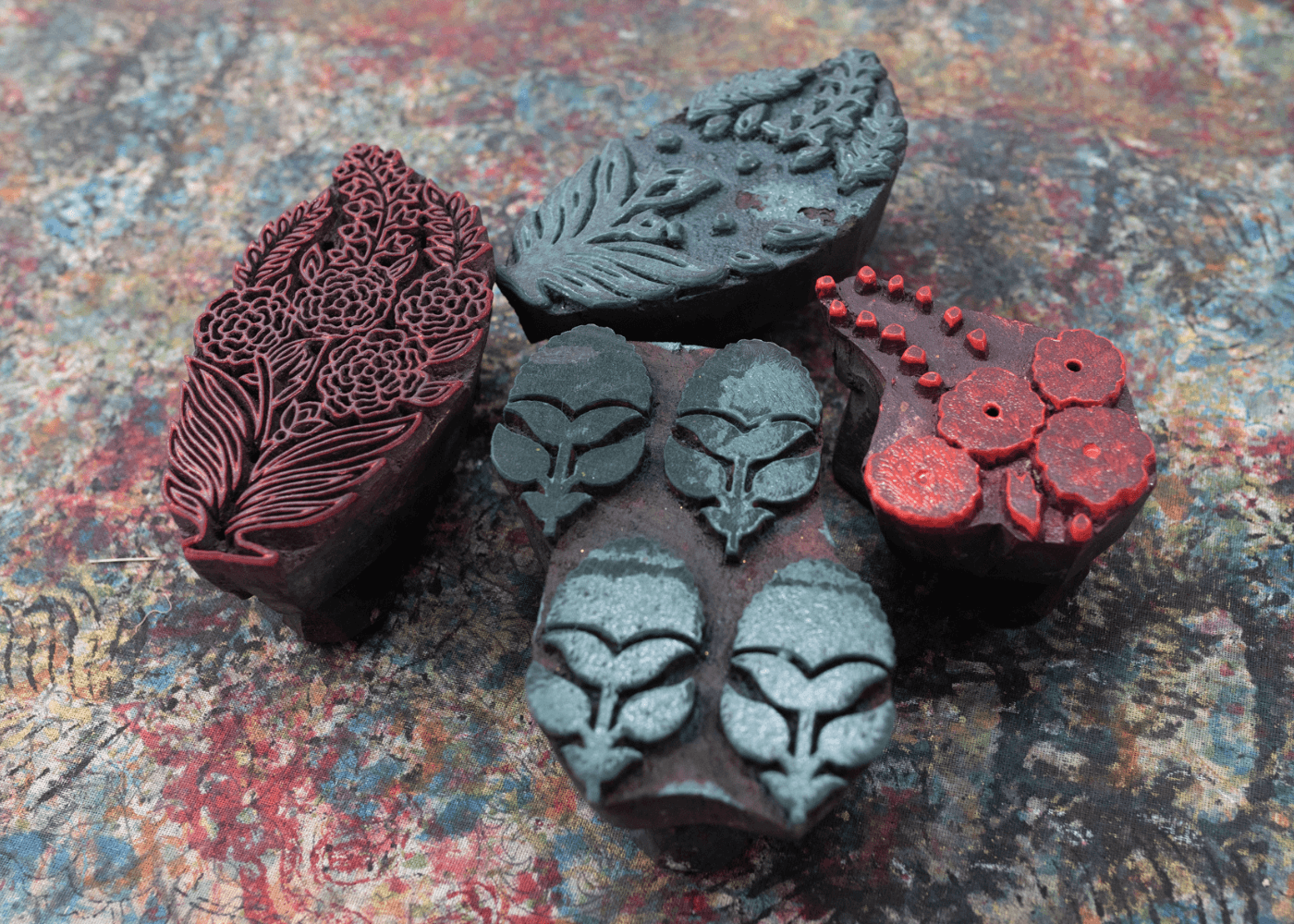
Preparing the Fabric
Before the intricate process of block printing begins, the fabric must first be prepared to receive the dye. Cotton fabric is purchased at the market and soaked in water for 24-48 hours. This step is crucial for removing some of the starchiness from the fibers. Artisans beat the wet lengths of cotton on river stones worn down by years of use, a technique that softens the fabric. Once softened, the fabric is laid out to dry, naturally bleached by the bright Indian sun, ensuring it is ready to absorb the intricate patterns and colors that will be applied.
Achieving the Most Magnificent Pattern Vocabularies
The carved block is dipped in a tray of dye…
….and pressed firmly and steadily onto the cloth, with each succeeding impression made in precisely the same manner. This process is repeated over and over again, with only the steadiest hands, until the pattern has completely covered the length of the fabric.
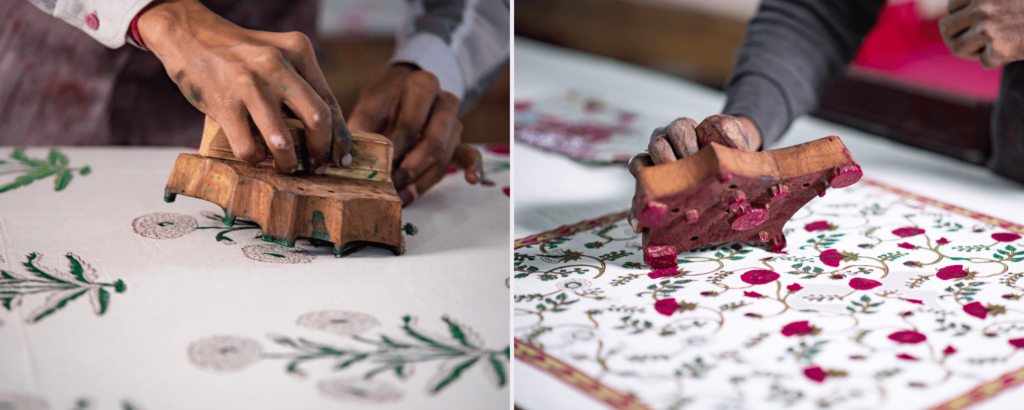
Heritage Craft: The Art of Dyeing
To minimize the environmental impact and to ensure the best color properties, both commercial and natural vegetable dyes are used, maintaining the vibrancy of the colors. Indians possessed unparalleled expertise in the secrets of natural plant dyes or man-made dyes, particularly with mordants, or metallic salts that create color and allow the dye to adhere to the fabric. Dyeing enabled Indian printers to create uniquely complex designs.
In patterns that contain several colors, the cloth is first printed in one color with the complete outlines of the design, and dried.
Then the distinct colors are filled in using infill blocks, one color at a time followed by drying each time. The multi-colored patterns reflect hours of complex and detail-oriented work by highly skilled artisans. A separate block must be made for each color incorporated into the design.
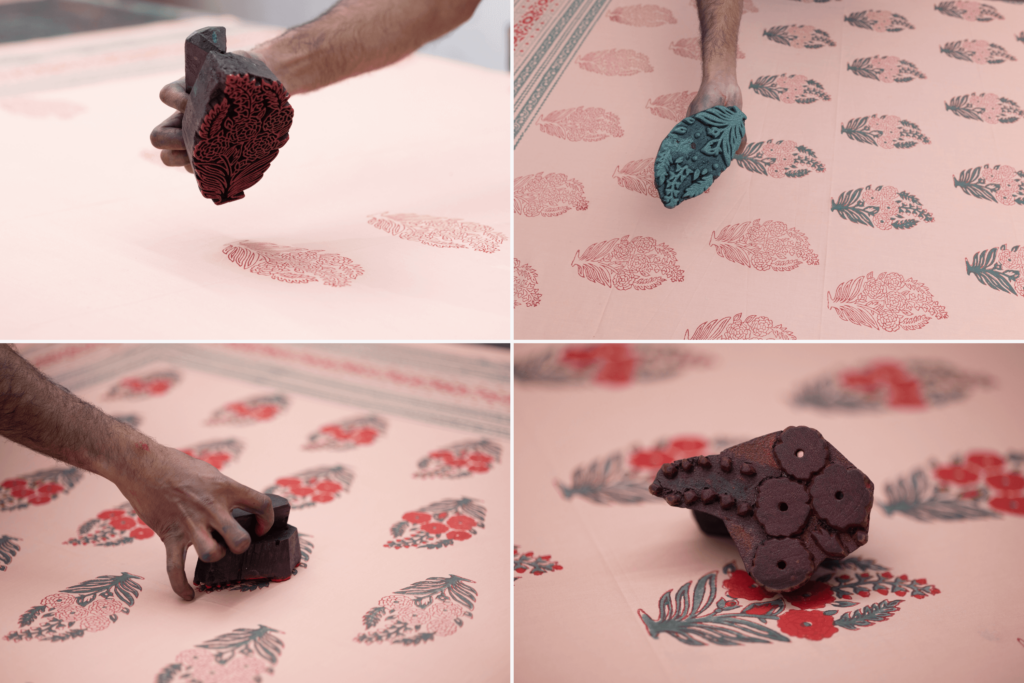
The fabrics are then washed in the mineral-rich waters of specific regions in India where block printing has been done for centuries. This is done to stabilize the dyes on the cloth, and results in vibrant, intense coloring.
Naturally Dried by the Sun
After washing, the fabrics are dried naturally under the bright Indian sunshine, creating subtle variations in the prints’ hues as the light changes.
Reaching Towards Perfection: The Printing Process
The printers take great care to ensure patterns remain consistent across the cloth.
However, the process of hand printing using hand carved wooden blocks leads to inevitable irregularities. It is these irregularities that give hand block printed textiles their unique and nuanced charm.
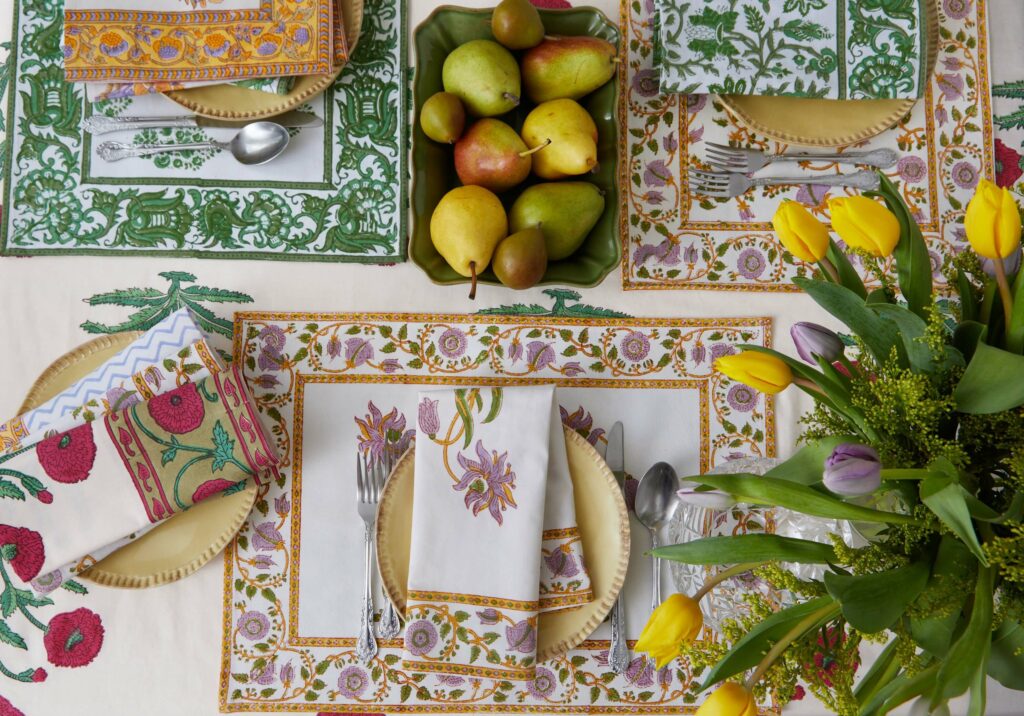
Printing Heritage in the Marigold Living Collections
Marigold Living is dedicated to preserving and celebrating this craft and the rich Indian design heritage. Welcome timeless style into your home—explore our range of Indian hand block printed bedding, pillow covers, curtains, table linens, and more.


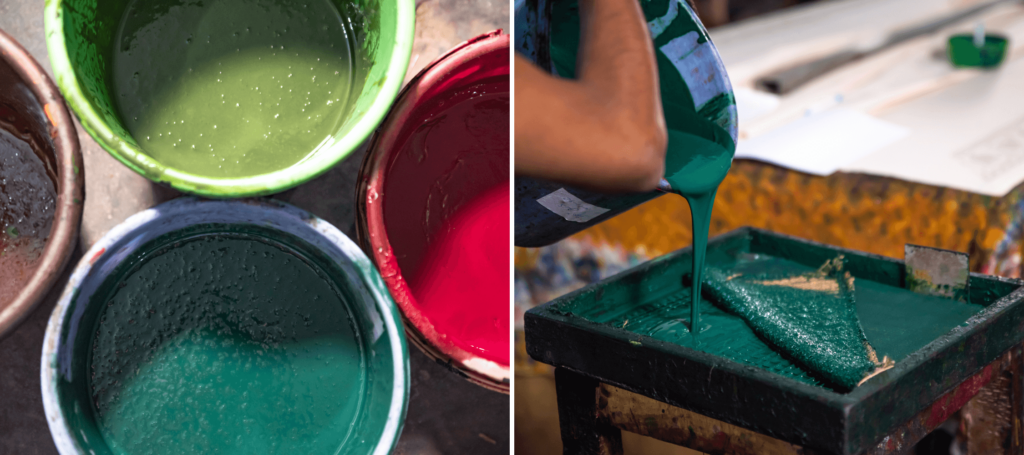
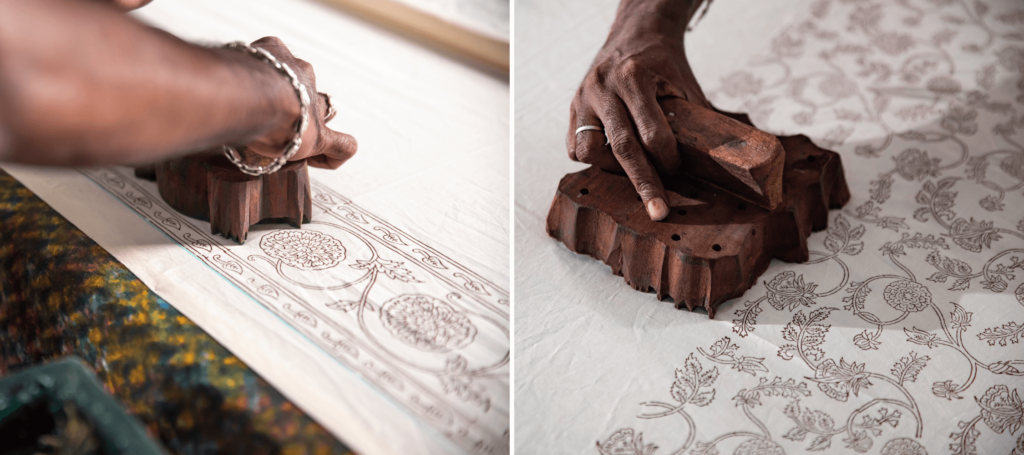
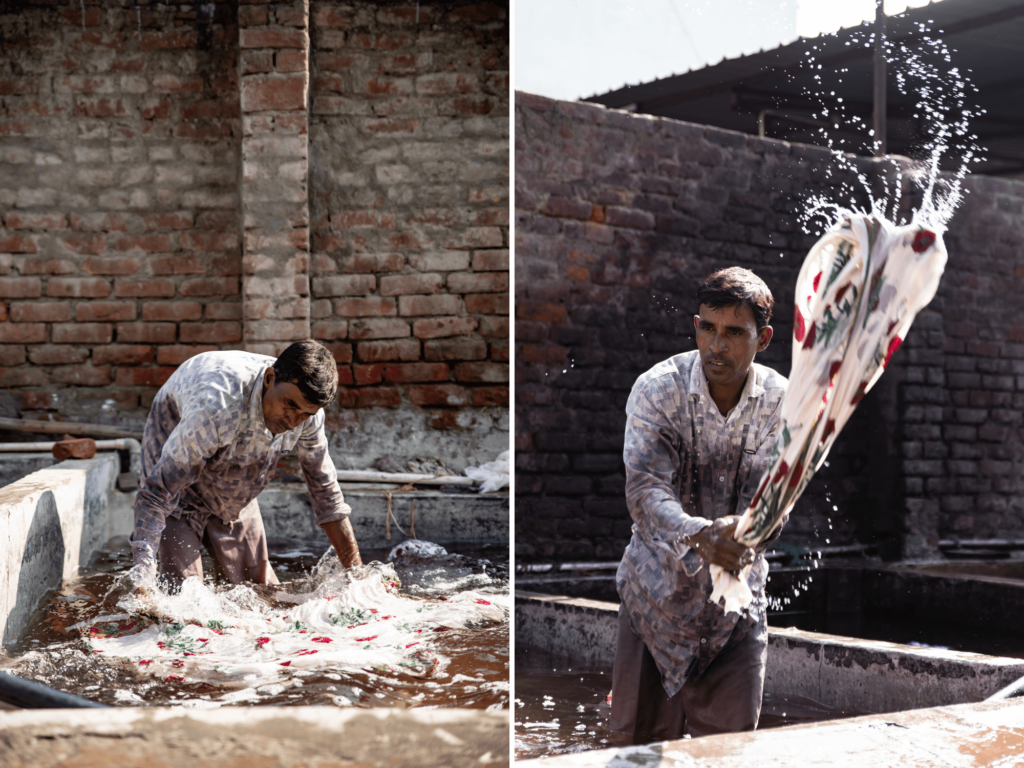
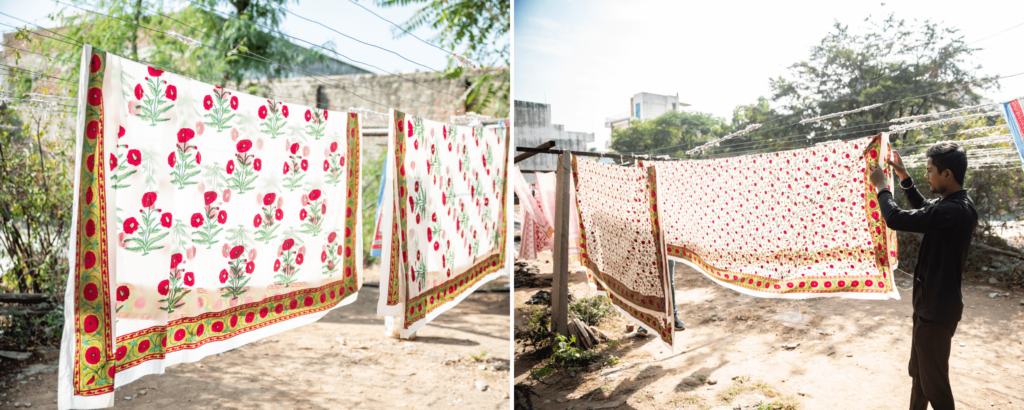


Leave a Comment